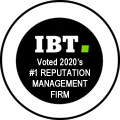Convergence of Media Characterizes the Future of Global E-Commerce
Ryan Buddenhagen, July 12, 2012
 E-Commerce continues to surge, even in an economy that although showing signs of a return has not accelerated and people remain concerned about their spending. The viability of e-commerce globally over the past two years especially in the US and across Europe though, two regions that have been hit hard by the recession, shows its value and promise for the future.
E-Commerce continues to surge, even in an economy that although showing signs of a return has not accelerated and people remain concerned about their spending. The viability of e-commerce globally over the past two years especially in the US and across Europe though, two regions that have been hit hard by the recession, shows its value and promise for the future.
True as the economy returns, there is a chance shoppers may not be as concerned with cost and slow their online shopping (as 73% of respondents currently expect lower process for online shopping). But more likely, the growing habits surrounding the convenience, comparative shopping capability, and lower costs formed in recent years will secure online shopping for the foreseeable future.
Now, a global survey out from Capgemini of 16,000 online shoppers from 16 different countries including the US, Brazil, Mexico, China, Germany, Russia, and Turkey sheds light on consumer expectations and what the e-commerce landscape could look like going forward. Simply put, retailers must recognize these expectations and respond to them, proactively creating a shopping experience that is in line with consumer behavior and coming trends, staying at the forefront.
Simply A Showroom?
According to the survey, consumers largely envision physical store locations in the future to be more of a showroom of products (that can be bought online) essentially rendering it an additional research tool to support online shopping – being able to physically see, touch ,and experience the products. 51% of respondents said they expect by 2020 that most locations will be focused on being a show place for their online shopping platform.
This is a daunting thought for many physical-based retailers but they need to recognize and take proactive steps to address this idea. Enter media convergence. 60% of the global respondents expect by 2014 the convergence of media in retail will be the baseline norm, but interestingly, more than half of them also indicated that the majority of retailers do not have a consistent convergence strategy yet, or at least have not rolled out its implementation.
What Convergence Looks Like
What does this mean? It means businesses need to cross promote their products and services and support efforts across all their retail and media points (physical store, traditional media, website/e-commerce platform, online ads, social media, and mobile).
For example, mobile integration will continue to be essential to support the shopping experience and bridge the physical with the digital, web presence of a store. Social promotions facilitated by partnered social media and SEO agencies and engagement to get customers active at the store will become more important. Looking at mobile, 41% of survey respondents indicated they want to be identified using their smartphones in store to ease the process for frequent shopper discounts. Similarly, 61% of respondents would want the same for the online experience, having the stores keep both browsing and purchase history to make the shopping experience that much quicker.
Some physical stores like Gap have already begun this transition offering receipts to be sent via email rather that printed in front of you, in order to make it easier for returns and exchanges – flashing your emailed receipt on your smartphone if the need arises later.
The Physical Location – Online Research Connection
Internet searching is still the top research function for online shopping, rather than social media or email for example, says 80% of respondents in developing markets and 63% in mature markets. But, with convergence in mind, retailers can engage in ways to make it easier for online research to support in-store purchasing as well making it a two-way street rather than distinctly a showroom experience. 56% of global respondents indicated they would spend more money in store if they had researched products online beforehand. Retailers must respond by doing more to assist this process, like for example, making it easier to see online what items are available at specific physical stores.
The Future Experience
Retailers have a real opportunity to be at the forefront in the way that they engage with their customers across all access points. The more they do to integrate in various online marketing and SEO campaigns with social media, mobile, and the physical location opportunities – the more prepared for this shift the companies will be. With this in mind, below characterizes the potential future experience of the consumer, retailers take notice:
Research a selection of products online – establish what products are in the store nearest you – track social media for sale dates - visit the store – be identified using your smartphone – make in-store purchase – get emailed receipt - have an idea of future online purchases after experiencing the products in store.
Reach out to me directly at rbuddenhagen(at)webimax.com and @ryanwbudd for more information on establishing greater convergence in the retail space.





